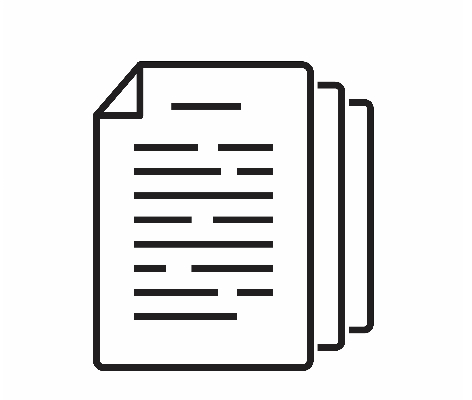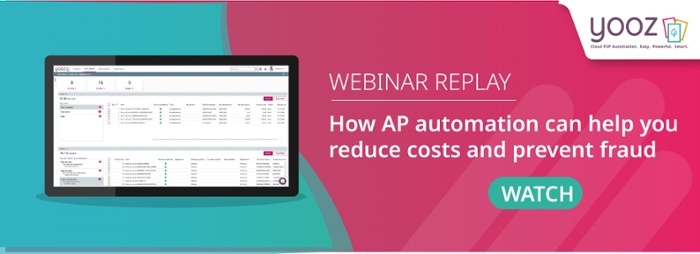As a business owner, what are you looking for when it comes to your operations? For most people, the answer is efficiency, cost savings, and productivity. Achieving these objectives can lead to higher customer satisfaction, improved employee morale, and a great reputation.
However, while efficiency is crucial, it can be challenging to achieve. The key lies in tackling one area or system at a time, implementing necessary changes to improve efficiency before moving on to the next. this approach makes the task much easier to manage.
Revitalizing Accounts Payable: The Three-Way Match
One area where businesses can make substantial improvements is in their Accounts Payable processes. An effective strategy for achieving positive change in this area is through implementation of the full three way match processing approach, a crucial component of automated invoice processing.
Read on to discover more about three-way matching and it benefits, including how it can lead to substantial cost savings.
Understanding the Three-Way Matching Process
So what exactly is the three way match system? Gaining a deeper understanding of it will help you to make the most of its benefits. And it is definitely worth exploring how it operates and understanding its potential in Accounts Payable workflow automation.
Essentially, the three-way match is a thorough validation process that involves comparing three crucial documents: the Purchase Order (PO), the receiving report (or goods receipt note), and the supplier’s or vendor invoice. These three documents form the foundation of the Accounts Payable process and are each equally vital.
A three-layer verification system process ensures that everything matches up perfectly: what was ordered, what was received, and what was invoiced. In other words, it’s about making sure you pay the right amount for the right goods or services at the right time.

The Components of a Three-Way Match
Purchase Order
The first document in the three-way match is the purchase order. This document outlines the specifics of the transaction, including the quantity, price, and description of the goods or services to be received. It serves as a legally binding agreement between the buyer and the supplier.
Receiving Report
The second document, known as the receiving report or goods receipt note, is generated when the goods or services are physically received by the company receiving department. It meticulously details what was actually delivered, including any discrepancies, damaged goods, or missing items.
Supplier’s Invoice
The third and final document is the supplier’s invoice. This invoice requests payment for the goods or services provided, and it should ideally match the details on the purchase order and the receiving report. Any deviations can signal potential discrepancies or errors.
The Transition from Manual Matching
Prior to the era of automated invoice processing and the three-way match, Accounts Payable departments relied on a manual invoice matching process. This approach was not only time-intensive but also prone to errors, presenting several significant challenges that hindered operational efficiency.
Increased Risk of Human Error
In the manual matching process, the potential for human error significantly escalates. Human operators are tasked with cross-referencing purchase orders, receiving reports, and vendor invoices, which can lead to inadvertent inaccuracies due to typos, data entry mistakes, or simply lapses in attention. These errors can result in overpayments, underpayments, and strained vendor relationships.
Inefficiency and Resource Drain
Manual matching process are inherently labor-intensive, consuming valuable time and resources. Accounts Payable teams must devote considerable effort to scrutinize each document to ensure alignment, diverting their attention from more strategic tasks. This inefficiency can lead to delayed payment processing, impacting cash flow and vendor satisfaction.
Lack of Real-Time Visibility
Manual processes often lack real-time visibility into discrepancies, meaning these issues may go undetected until a later stage in the payment process, potentially resulting in payment disputes, late fees, or missed early payment discounts. The absence of immediate insight into discrepancies also makes it challenging to address problems promptly.
Vulnerability to Fraudulent Invoices
One of the most pressing concerns of manual matching is its vulnerability to fraudulent invoices. Without a robust validation process like the three way match, fraudulent invoices can easily slip through the cracks. Fraudsters may exploit the lack of automated cross-referencing to submit false or inflated invoices, causing significant financial losses and reputational damage to your organization.

The Benefits of a Three-Way Match
Implementing a three-way match yields numerous significant benefits, making it an essential component of automated invoice processing. These include:
1. Increased Accuracy: Automating the validation process drastically reduces the likelihood of human error. The system meticulously cross-references three key documents for discrepancies, ensuring that payments are accurate and exactly matches the original purchase agreement.
2. Time and Resource Efficiency: Automation using a three-way match frees up your Accounts Payable team from labor-intensive and repetitive manual tasks. This enables them to not just save money but focus on more strategic activities, as the system handles the validation process with speed and precision.
3. Fraud Deterrence: One of the main advantages of the three-way match process lies in its capacity for Accounts Payable fraud detection. Any inconsistencies between the documents raise immediate red flags, enabling prompt investigation and action.
4. Enhanced Transparency: Automated invoice processing with the three-way match provides real-time visibility into the payment process. This enables swift identification and resolution of discrepancies, ensuring seamless operations and preventing potential financial losses.
How The Three-Way Match Works
Let’s take a closer look into the intricacies of the automated three-way matching process.
1. Data Extraction: The system extracts data from the purchase order, receiving report, and supplier’s invoice.
2. Validation: The system verifies the extracted data, ensuring that it matches across all three documents. Any discrepancies trigger alerts for further investigation.
3. Approval Workflow: Validated invoices are sent through an invoice approval workflow, ensuring that only accurate invoices move forward for payment.
4. Payment: Once approved, the system initiates the payment process, ensuring timely payments to suppliers.
Optimizing Your Payment Processes
Incorporating automated three way matching into your accounts payable workflow streamlines the payment process in several key ways.
1. Faster Processing: Invoices are quickly validated and approved, leading to timely payments and strengthening supplier relationships.
2. Cost Reduction: By eliminating manual errors and fraud, you can conserve funds that would otherwise be lost to overpayments or fraudulent invoices.
3. Enhanced Compliance:: The three-way match helps maintain compliance with contractual agreements, reducing the risk of legal disputes - far more prevalent than you might imagine - with litigation surveys showing an increasing number involved in some form of regulatory litigation.
Implementing The Three-Way Match Effectively
To execute the three-way match effectively, consider the following steps:
1. Evaluate Your Current Process: Assess your existing accounts payable process to identify pain points and areas for improvement.
2. Choose the Right Software: Invest in a reliable automated invoice processing solution equipped with three-way matching capabilities.
3. Training: Provide comprehensive training to your Accounts Payable team to ensure they understand how to use the new system.
4. Monitoring and Optimization: Continuously monitor the three-way match process and make necessary adjustments for optimal performance.
Conclusion
The three-way match stands as a vital component of Accounts Payable technology that can significantly elevate your invoice processing operations. To witness its transformative benefits firsthand, why not schedule a demo with Yooz, a leader in the field of automated invoice processing solutions?
Click the link below to request a personalized Yooz demo and start your journey towards streamlining your Accounts Payable process today.
FAQs
What is a three way match in accounts payable ?
What is three-way matching?
Which document typically triggers the three-way match?
What is the main goal for a three-way-match?









